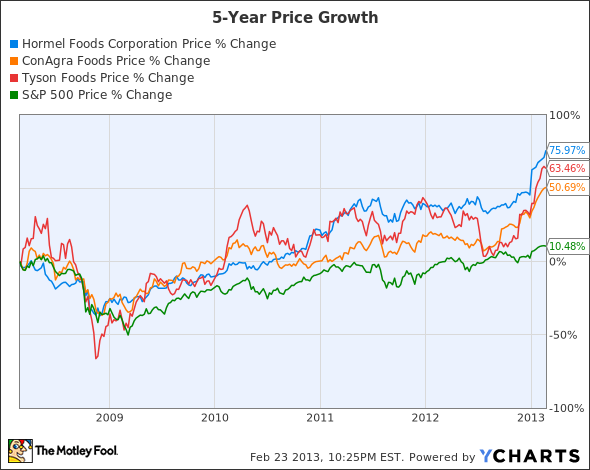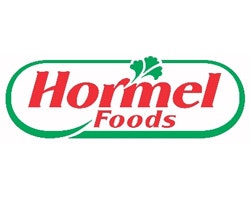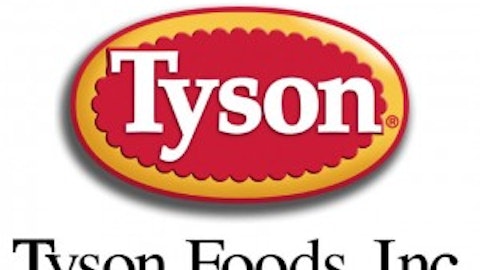Hormel Foods Corporation (NYSE:HRL), the maker of iconic canned meat Spam, has surprisingly been one of the most impressive growth stocks of the decade. The stock has risen 240% over the past ten years and nearly 80% over the past five – leaving the S&P 500 in the dust. It has also outperformed major competitors such as ConAgra Foods, Inc. (NYSE:CAG) and Tyson Foods, Inc. (NYSE:TSN). What factors propelled this seemingly ordinary stock to new highs, and should investors take note?

Besides Spam, Hormel generates revenue from five main segments: grocery products, refrigerated foods, the Jennie-O Turkey Store, specialty foods and other products – which include nutritional food and gelatin products. Meat products are a large part of Hormel’s product line – which include both perishable fresh meat as well as shelf-stable canned meat. Its shelf-stable canned products also include stews, tortilla chips, salsa and Skippy peanut butter – which it recently acquired for $700 million.

At first glance, the bullish sentiment pushing Hormel to new highs doesn’t seem justified. For its first quarter, Hormel earned 48 cents per share, meeting analyst expectations, on revenue of $2.12 billion – which missed the $2.14 billion consensus.
Hormel’s refrigerated foods segment, which comprises approximately half of its total revenue, posted a sales decline of 1.9% to $1.06 billion – missing Wall Street’ estimate of $1.10 billion. Operating profit was flat from the previous year.
Its Jennie-O Turkey Store segment, which generates 18% of Hormel’s revenue, generated $390.3 million in sales, missing the consensus estimate by $5 million. Operating profit also slid 23% from the prior year quarter. Hormel expects the segment to post even weaker growth in 2012.
Despite these declines, Hormel still raised its full-year forecast by three cents, up to a range between $1.93 and $2.03. That’s in line with the average analyst forecast of $1.97.
The Global Cult of Spam
Despite its lowly, often-ridiculed reputation in the continental United States, Hormel’s Spam has a strong following in other markets – owing to its portability and durability. In Hawaii, Spam is a main ingredient in several local dishes, including Spam Sushi.
Spam is also popular in China, Japan, South Korea and the Philippines. In Japan and South Korea, Spam is used as a quick substitute for more wholesome meat, and is usually used to complement rice dishes or noodles. The Chinese use Spam in fried noodles and sandwiches, while Filipinos use Spam in breakfast sandwiches.
Hormel’s Spam has an enviable cult following across the world, which has fueled its growth in emerging markets. The diverse adaptability of the meat, in contrast to regular sliced ham, is its core strength.
As a result, Hormel’s international operating profit rose 37%, as sales volume increased 5%.
Versus Competitors
Let’s compare Hormel’s fundamentals against ConAgra, Mondelez International Inc (NASDAQ:MDLZ) and B&G Foods, Inc. (NYSE:BGS)’s – which all produce packaged food products, as well as Tyson, which primarily sells meat products, to better understand how Hormel measures up.
ConAgra is the parent company of Chef Boyardee, Hebrew International, Hunt’s, Orville Redenbacher and Swiss Miss. Mondelez was formerly Kraft’s packaged foods division, and creates some of the most well-known brands in the world – such as Oreo, Cadbury, Nabisco and Trident. B&G’s is comparably smaller, and is best known for its Accent and Mrs. Dash spice products.
| Forward P/E | 5-year PEG | Price to Sales (ttm) | Debt to Equity | Return on Equity (ttm) | Profit Margin | |
| Hormel | 16.65 | 1.71 | 1.17 | 8.85 | 18.41% | 6.09% |
| ConAgra | 13.84 | 1.80 | 0.99 | 79.83 | 14.09% | 4.76% |
| Mondelez | 15.21 | 1.27 | 1.36 | 60.04 | 4.63% | 8.65% |
| B&G’s | 18.52 | 2.15 | 2.38 | 176.56 | 19.86% | 9.35% |
| Tyson | 9.96 | 1.32 | 0.25 | 40.05 | 9.91% | 1.80% |
| Advantage | Tyson | Mondelez | Tyson | Hormel | B&G’s | B&G’s |
Source: Yahoo Finance
Since Hormel is trading near all-time highs, its P/E and PEG ratios are now at a premium to its peers, which make it slightly overvalued. However, the stock still has strong momentum, considering its robust Return on Equity over the past twelve months. Low debt levels are also a boon for the company.
How did Hormel fare against these industrial peers in top and bottom line growth over the past five years?

HRL Revenue TTM data by YCharts
Hormel’s revenue growth is slow and steady, only beaten out by B&G’s, which gained considerable momentum in 2012. However, with a market cap of $1.5 billion, B&G is also much smaller than Hormel – and smaller companies generally have much more upside than mature ones.

HRL EPS Diluted TTM data by YCharts
Like its top line growth, Hormel’s bottom line growth has been as smooth as its creamy Skippy peanut butter. Hormel’s balance between consumer packaged products, such as Skippy, and its packaged meat products has also given Hormel an edge over factory farming giant Tyson, which is completely dependent on the price of meat.
Dividend Increases
Hormel’s quarterly dividend of 17 cents per share – a 1.83% yield at the time of this writing – is hardly impressive. In fact, it’s near the bottom of the barrel in terms of yield for its industry.
| Company | Quarterly Dividend | Yield |
| B&G | $0.29 | 3.99% |
| ConAgra | $0.25 | 2.95% |
| Hormel | $0.17 | 1.83% |
| Tyson | $0.05 | 0.80% |
Source: Yahoo Finance
Hormel has consistently raised its dividend over the past ten years, but the problem is its unimpressive yield. I believe if Hormel’s stock price growth cools off, then its yield will become more attractive when compared to its price.
The Foolish Bottom Line
Although there are many macro concerns on the horizon – the payroll tax cut, the ominous sequester, and weakened discretionary spending – people still have to eat. In a weak economy, brands such as Spam and Skippy will still thrive. Strong demand for Spam in overseas markets, which constantly evolve the product, is making Spam an indispensable, integral part of culinary cultures worldwide.
Hormel’s business model is also durable. Based on past performance, consumers eat more of its turkey products when times are good, and more Spam when times aren’t – a win-win, self-balancing situation for the company. Although Hormel’s brands are boring and slow growth, they are in constant, steady demand – perhaps just what investors need in today’s tumultuous economic environment.
The article It’s a Spammy, Spammy World originally appeared on Fool.com and is written by Leo Sun.
Copyright © 1995 – 2013 The Motley Fool, LLC. All rights reserved. The Motley Fool has a disclosure policy.





